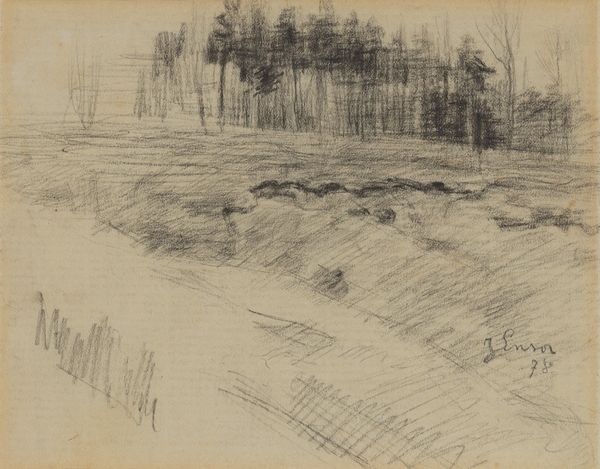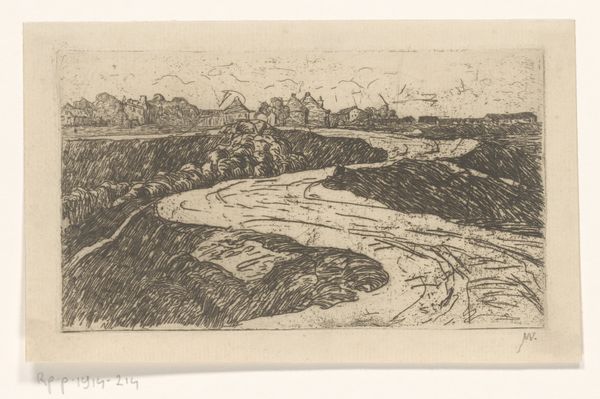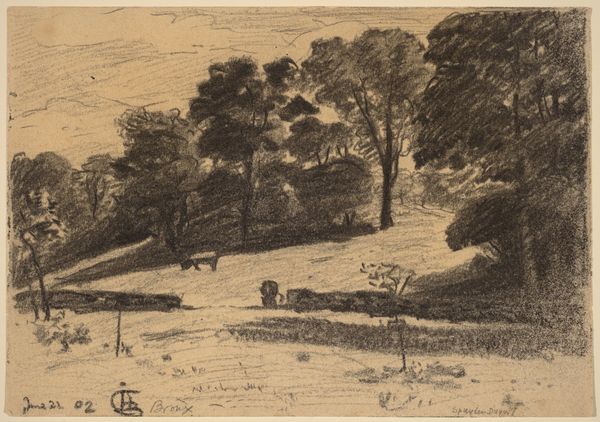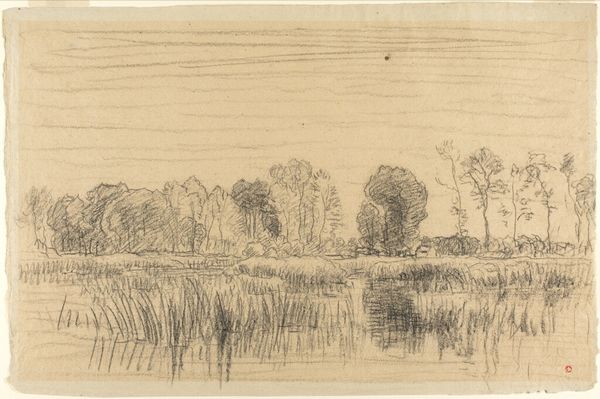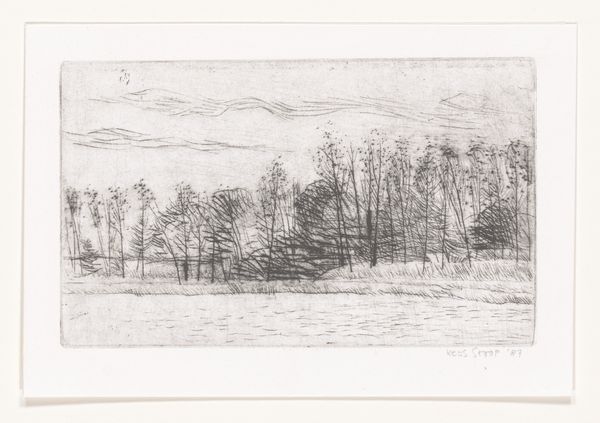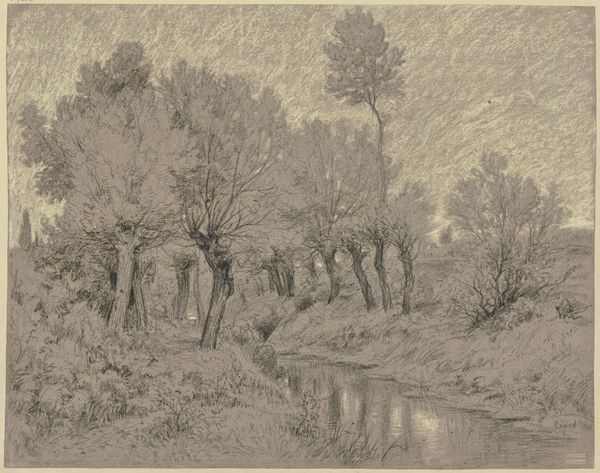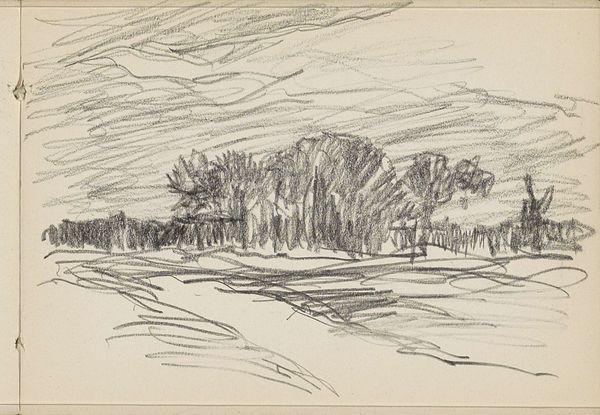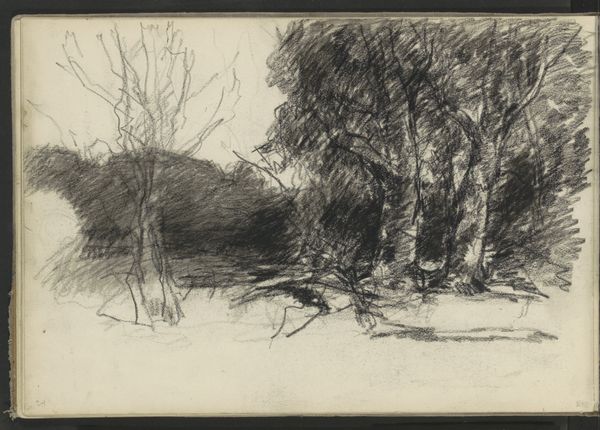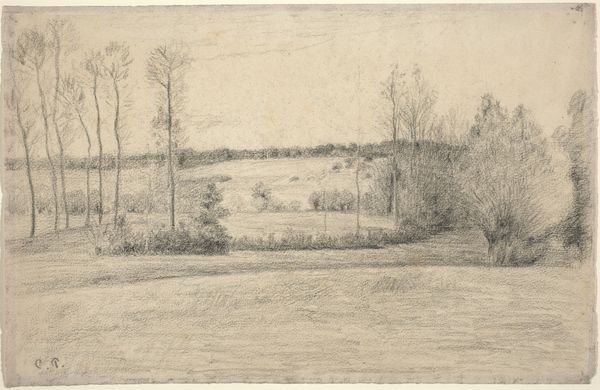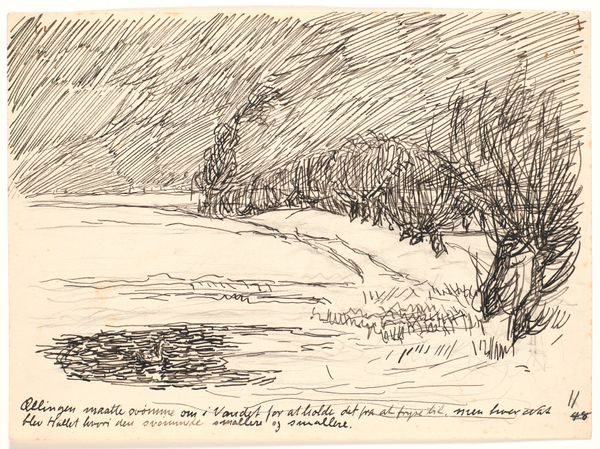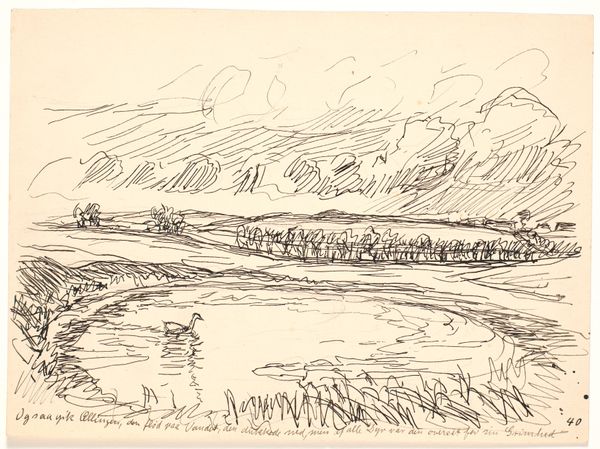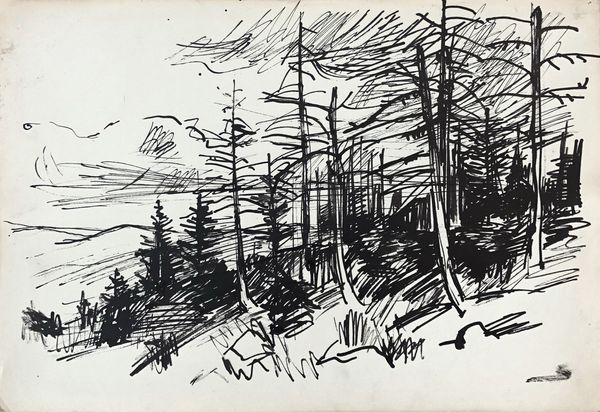
Dimensions: overall: 23.4 x 34 cm (9 3/16 x 13 3/8 in.)
Copyright: National Gallery of Art: CC0 1.0
Curator: Here we have Oscar Bluemner’s "Riverhead, Long Island," created in 1903, using pencil as his medium. Editor: Immediately, I'm struck by the somber, almost melancholic atmosphere despite its being a landscape. The muted tones and sketch-like quality create a sense of quiet contemplation. Curator: It’s interesting you say that, given Bluemner’s later association with the Precisionist movement. He moves later on to stark industrial landscapes, with bold blocks of flat color. This, by contrast, emphasizes naturalism. Look at the layering and hatching with pencil to render textures in the trees. It's a clear attempt to capture the qualities of this specific locale, "Riverhead." The drawing bears his notes on it at the bottom as well. Editor: Absolutely, but even within that context, there's a distinct mood conveyed by the looming clouds, which create a sense of foreboding and the way the water mirrors the light – or lack thereof. It reminds me of Romantic landscape paintings that utilize nature to evoke feelings of the sublime, but distilled to its most elemental form through Bluemner’s marks. He must have captured this scene in a rather quick drawing session en plein air. Curator: The landscape tradition provided fertile ground for Bluemner to start a visual dialogue on his own artistic development. Considering he trained as an architect, one can easily analyze his mark-making in this period. See how the pencil hatches build dimension? This speaks to both an attention to the specific details in nature and his more structured sensibilities in practice. Editor: And think about how landscapes, as a genre, so often embody ideas of nationhood and belonging. Perhaps Bluemner’s naturalistic approach, at this point in his career, suggests he may still be trying to reconcile personal expression within prevailing social and artistic frameworks. Or, put another way, these are visual tropes about America during this period. Curator: Precisely, though by 1916 we see him in completely different directions, as he distances himself more firmly with more modernist approaches in later paintings. Thanks to this drawing, however, we can learn of the development from naturalistic techniques to eventually break free towards the artist that he became. Editor: It leaves you pondering the unseen elements, encouraging you to bring your own experiences to the landscape to connect with an authentic image.
Comments
No comments
Be the first to comment and join the conversation on the ultimate creative platform.
